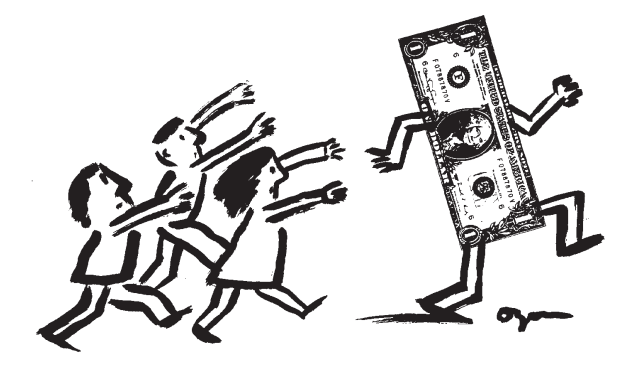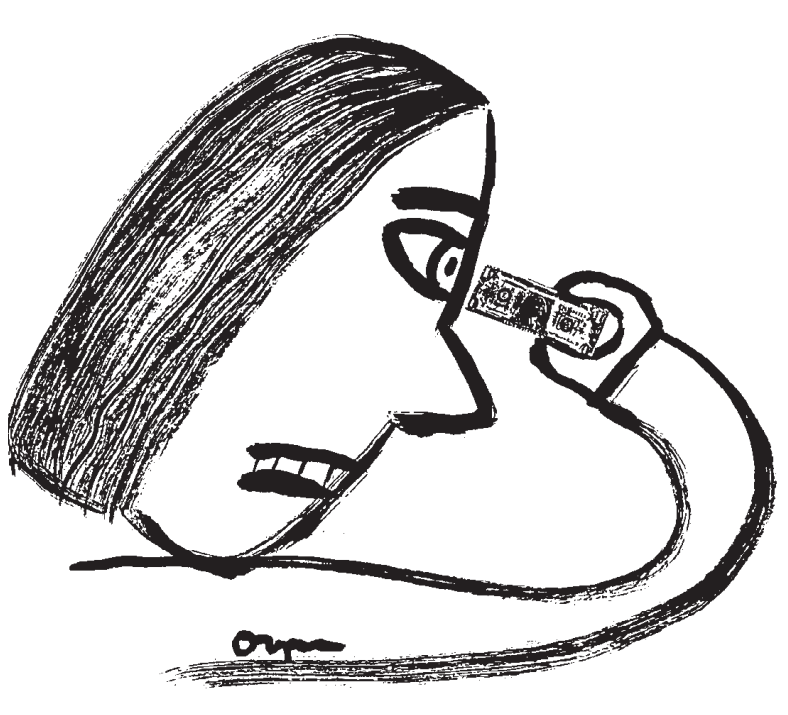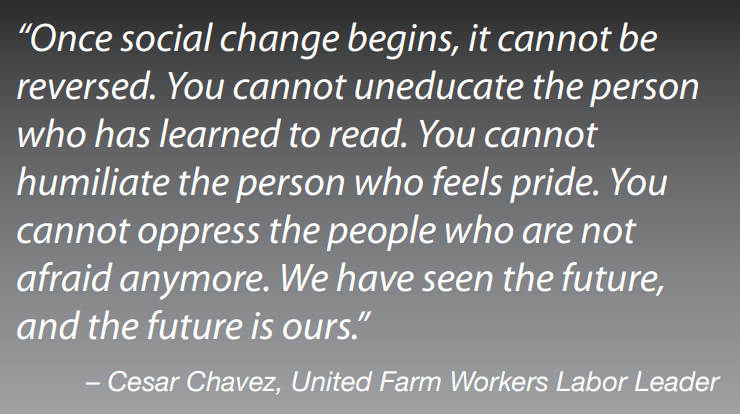In today’s political discourse, the argument of “trickle-down economics” reigns within the Republican Party as a way to protect the top-bracket tax breaks of the richest Americans. The GOP has successfully argued for many years that this will then improve the standard of living for the working class. The idea is that jobs will be created, wages will be raised for the average worker and there will be an overall upturn in our economy. As it turns out, it’s not only a bad idea but also a tactic to broaden income inequality.
According to the Organization for Economic Cooperation and Development (OECD), in 2009, about one-quarter of U.S. workers were in low-wage jobs. A low-wage worker is considered someone who makes less than two-thirds of the nation’s median hourly wage. So, in 2009, the median hourly wage was $15.95. That means that a low-wage worker would have made less than or equal to $7.25 (the federal minimum wage in 2009) to $10.63 per hour.
The OECD dates back to 1960, when 18 European countries, the United States and Canada joined together to create an organization dedicated to global development. Today, there are 34 member countries, including some of the world’s most advanced countries, like the UK, Germany, Spain, Japan, France and Italy.
Of these highly advanced countries, the United States has the highest share of employees in low-wage work. If low-wage jobs were a stepping-stone to higher-paying jobs than this large share of low-wage American workers would be a happy problem. Unfortunately, low-wage work is not only persistent and recurring for many workers; low wages have contributed to a growth in income and wealth inequality.
The U.S. will not outgrow low-wage work
The Gross Domestic Product (GDP) is the market value of all a country’s official final goods and services produced within a period of time, usually marked annually. The GDP per capita (per person) is not an absolute measurement of the standard of living within a country, but it is used as an indicator under the belief that all citizens would benefit from their country’s increased economic production
However, when people use the GDP as an indicator of the average standard of living, they frequently overlook that the GDP per capita does not provide any information relevant to the distribution of income – income inequality. When it comes to low-wage workers, the United States high level of GDP per capita has not reduced the share of low-wage workers. Thus, income inequality is exacerbated and Occupy movements are born.
Labor unions raise wages
The most important influence in lowering levels of low-wage work is labor unions. Labor unions provide collective bargaining to a large number of workers at a company. Labor unions increase wages for members as well as raise standards—and increase wages for nonmembers. Unions are heavily involved in political action creating influence of economic program development helping create and strengthen the middle class. Labor unions are instrumental in pushing for and defending Social Security, Medicare, family leave, the minimum wage and health care reform.
In fact, in Hawaii if union membership increased by 10 percent, middle class households would earn $1,724 more per household. In an article by Bruce Western and Jake Rosenfeld, it was found that the decline of union membership accounts for one-third of the rise in economic inequality in the United States over the past 30 years. One-third!
According to the Bureau of Labor Statistics (BLS), food preparation and serving related occupations have the largest share of workers earning a wage at or below the poverty level. The next largest shares include: farming, fishing and forestry occupations, personal care and service occupations, building grounds, cleaning and maintenance, and healthcare support occupations.
The BLS does not project a dramatic change in the share of workers employed in any major occupation groups by 2020. In fact, contrary to the popular rhetoric that a future American workforce will need higher education and training, jobs will actually not require a significantly greater level of education or training than what workers currently hold. The BLS findings reveal that an increase in the share of workers with a college degree will not guarantee an economy that is any more equitable or better than today.
As a matter of fact, low-wage workers today are better educated than they were three decades ago, when wage inequality first began to rise. Education does not necessarily result in the avoidance of low-wage work.

The U.S. minimum wage is too low
The U.S. Census Bureau data of 2011 reveals that as labor union membership decreases, so does the middle class. States with the lowest percentage of workers in unions all have relatively weak middle classes. The share of income going to the middle class in North Carolina, Georgia, Arkansas, Louisiana, Mississippi, South Carolina, Tennessee, Virginia, Oklahoma, and Texas is well below the national average.
In 1968, when the share of income going to the nation’s middle class was 53.2 percent, the percentage of all workers who were members of unions was 28 percent. In 2010, the middle class only received 46.5 percent, as union membership dropped to less than 12 percent of workers.

When unions weaken a larger share of the economy’s gain goes to the wealthy. That is a fact. That is why the GOP and the 1% have waged a war on the working class and labor unions. In order to protect the growing income inequality, labor unions must be taken out of the picture. Between 1974 and 2007, the richest 1% of Americans enjoyed an income increase of 9 percent to 23 percent. The top 0.1 percent enjoyed an income that quadrupled from 2.7 percent to 12.3 percent. Those percentages seem small, but think of what an income of 12.3 percent looks like, in terms of billions of dollars. Now think of what your income look like, in terms of the cents that are increased every three to five years.
Workers have bigger issues than wages
Wages aren’t the biggest problem for American workers, believe it or not. U.S. labor law offers few protections compared to other advanced, wealthy countries. Of the OECD, the United States has the lowest level of job security, no legal rights to paid vacations, paid sick days or paid parental leave. Because of the low membership numbers of labor unions in the United States, there are many workers who don’t have any contractual guarantees of protection.
Even bigger than the job securities stated above is the lack of access to health care for workers. More than half of low-wage workers do not have employerprovided health insurance and more than a third have no health insurance of any kind.
Raising wages for the low-wage worker will not in turn address the other issues that these workers face. With the help of collective bargaining and union membership, these workers would benefit from contracts providing access to health insurance, paid sick days, family leave, paid vacation and holidays as well as benefits that are usually reserved for higher-wage workers.

In today’s news cycle, pundits are constantly propagandizing a message for the American worker to believe that there simply isn’t enough money to go around. That if a company is to increase wages, than they will be forced to outsource their work to another country so that they may compete in the world market.
These wealthy and educated top bracket Americans will do anything to protect their astronomical gains and greed. Think about the old sugar bosses of Hawaii. The economy of Hawaii was controlled by a handful of families. They relied on pitting the Chinese against the Koreans against the Filipinos against the Japanese against the locals. The ILWU was successful in bringing racial unity to the workers and only then were the workers able to challenge the top 1% of the old days.
Now frame that to today, all across the United States. No different. We are just a larger group of workers; with a larger range of diversity, with a cleverer 1% pitting the workers against each other.
When you hear people talking about labor unions being the reason work is outsourced, or wages cannot be increased because there simply isn’t enough money, be empowered with these facts:
•The United States has the highest share of employees in lowwage work of 34 of the most advanced countries in the world.
• Yet, since 1975, almost all of the productivity gains have gone to the owners of capital, as the wages for workers have not increased.
• Low-wage workers in the U.S. are more likely to stay in low-wage work or fall out of the workforce completely.
• Low wages have contributed to a huge growth in income and wealth inequality.
• When labor union membership decreases, so does the middle class.
• A strong middle class is a sign that labor unions exist and are using their collective bargaining mechanisms to protect the American worker.
• In Hawaii if union membership increased by 10 percent, middle class households would earn $1,724 a year more per household.
• In Hawaii there are 113,000 union members or 21.5% of the workforce. If we mobilized 11,300 more members, you would see an increase in your household income by $1,724.
• An increase in the share of workers with a college degree does not guarantee an economy that is any more equitable or better than today.
• Low-wage workers today are better educated than they were three decades ago, when wage inequality first began to rise.
• When labor unions weaken a larger share of the economy’s gain goes to the wealthy.
• Raising low wages isn’t the solve-all for strengthening the middle class.
• With collective bargaining and union membership, workers benefit from contracts providing access to health insurance, paid sick days, family leave, paid vacation and holidays as well as benefits that are usually reserved for higher-wage workers.
